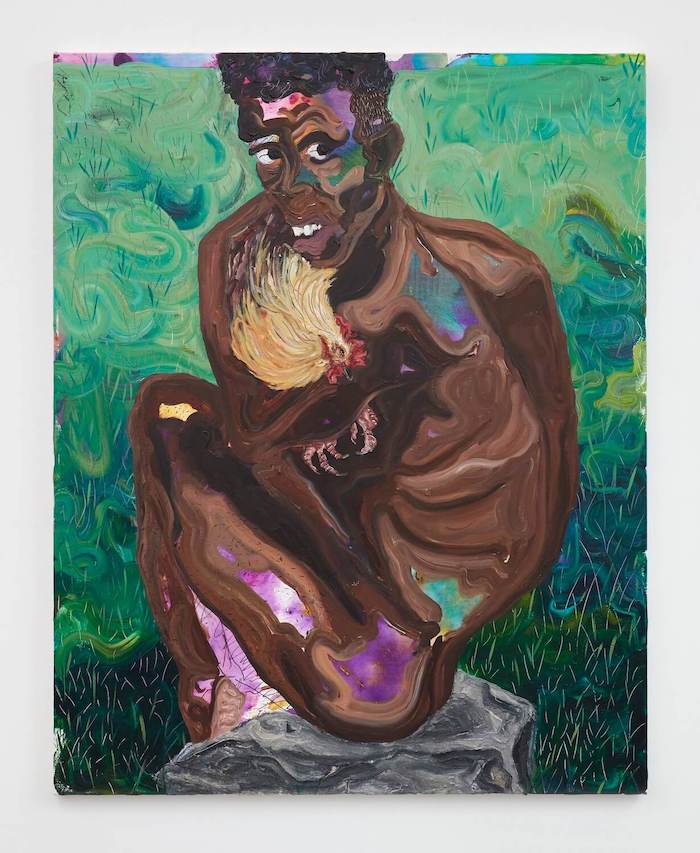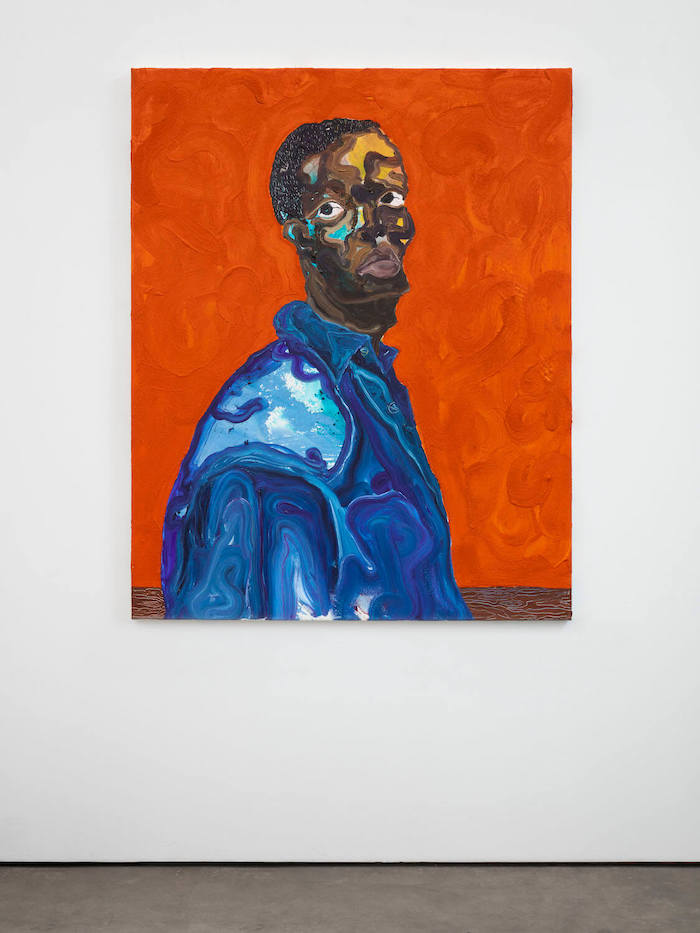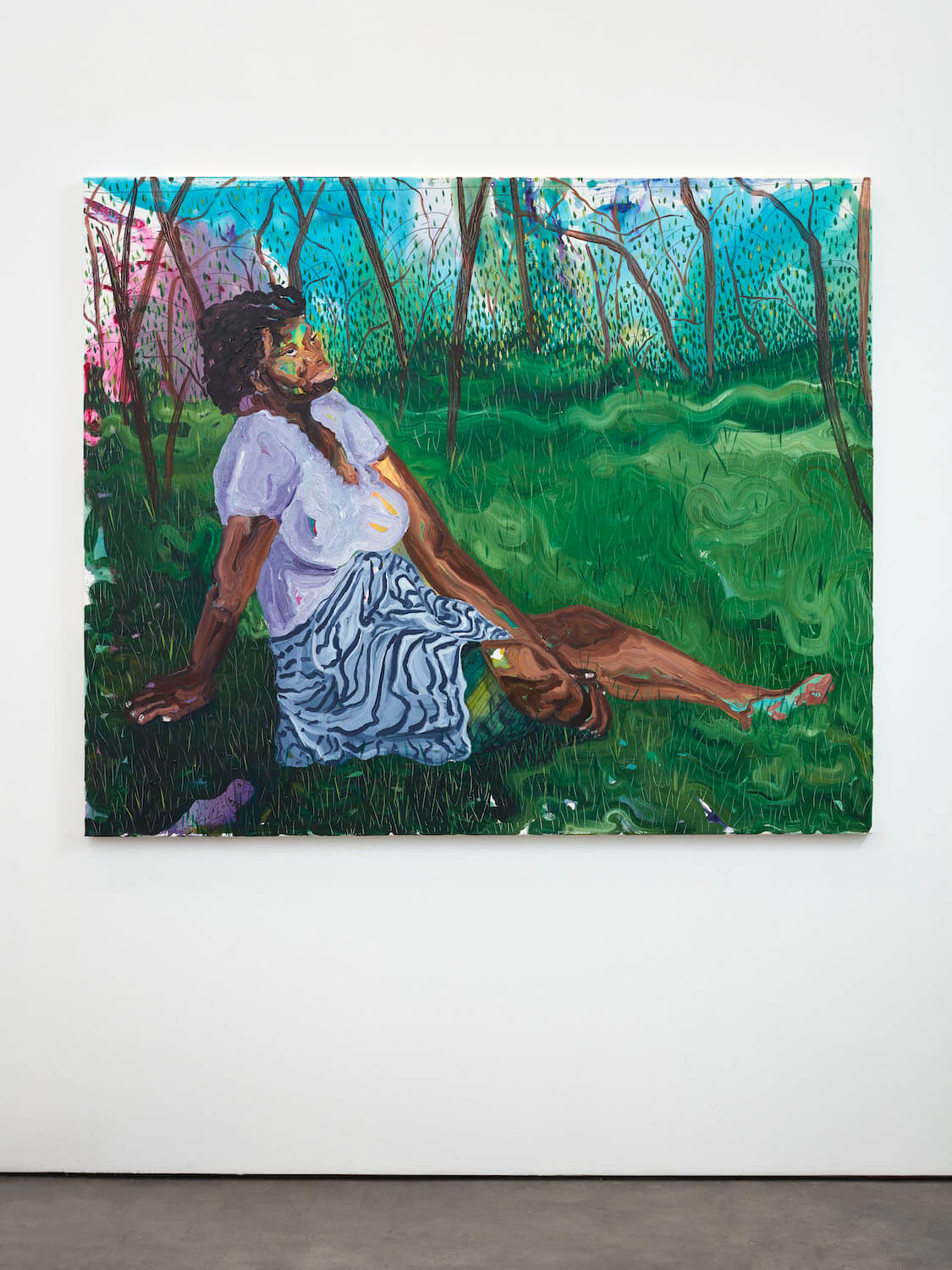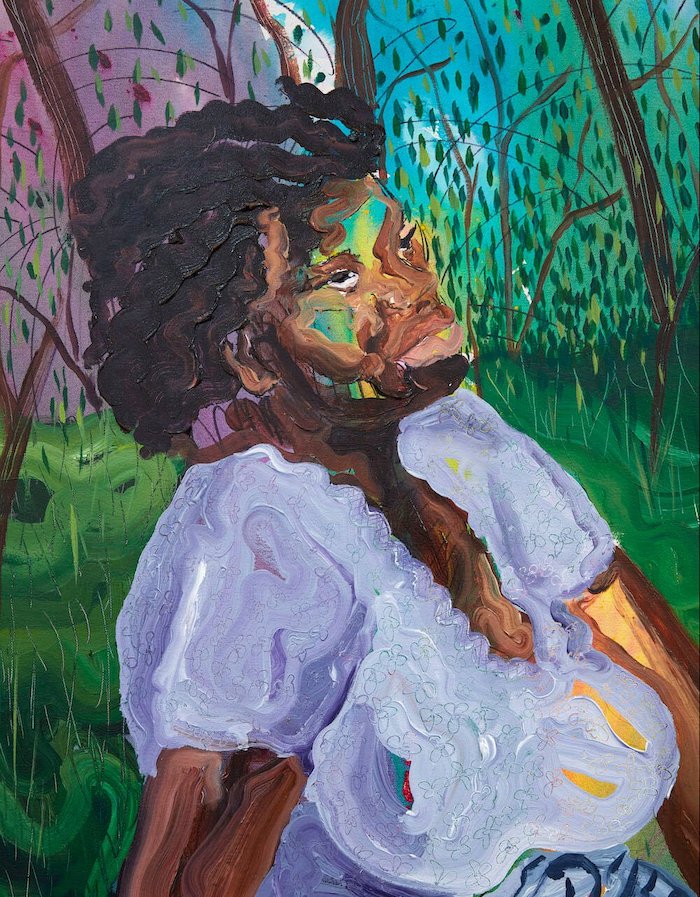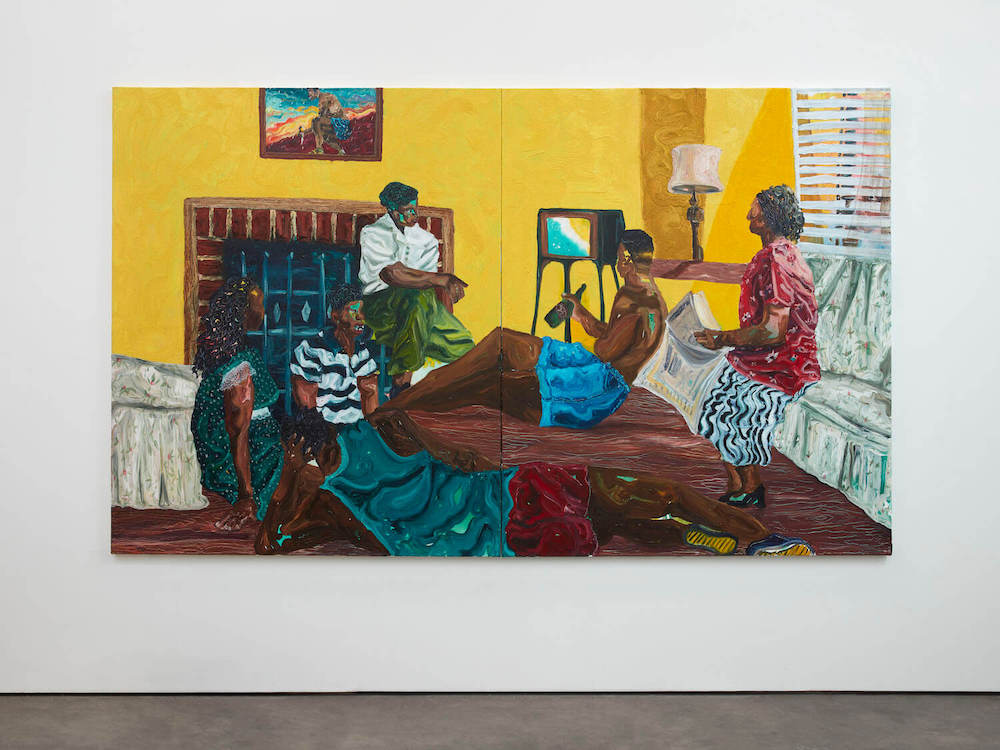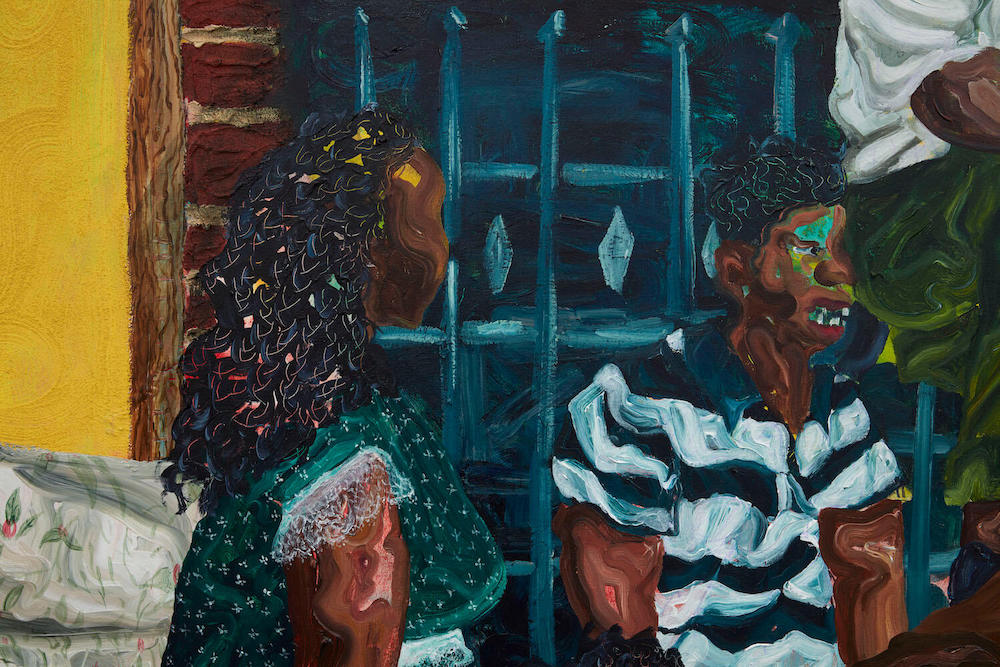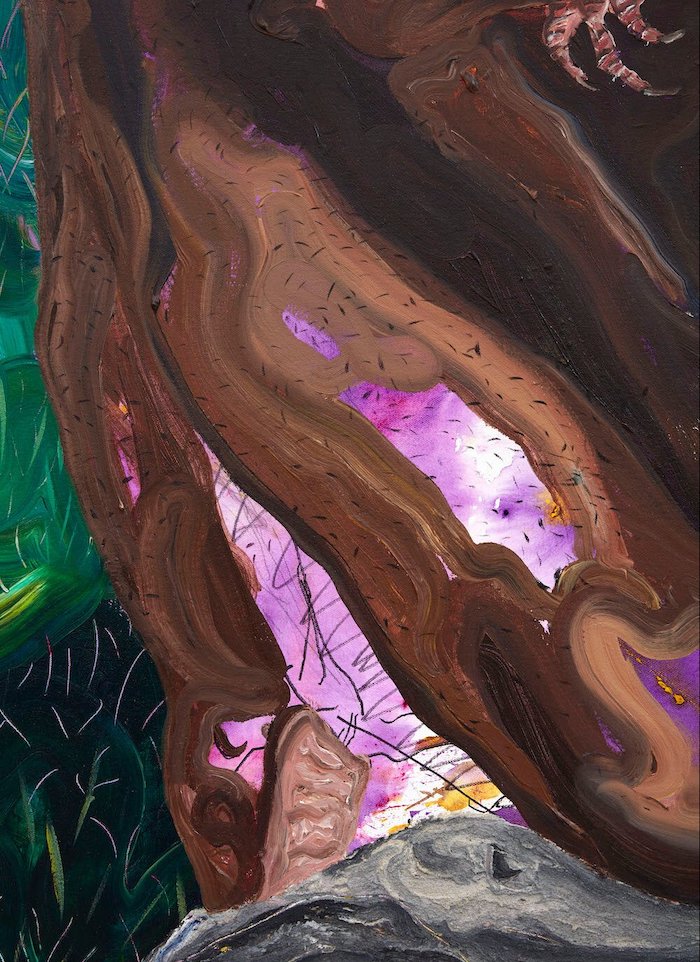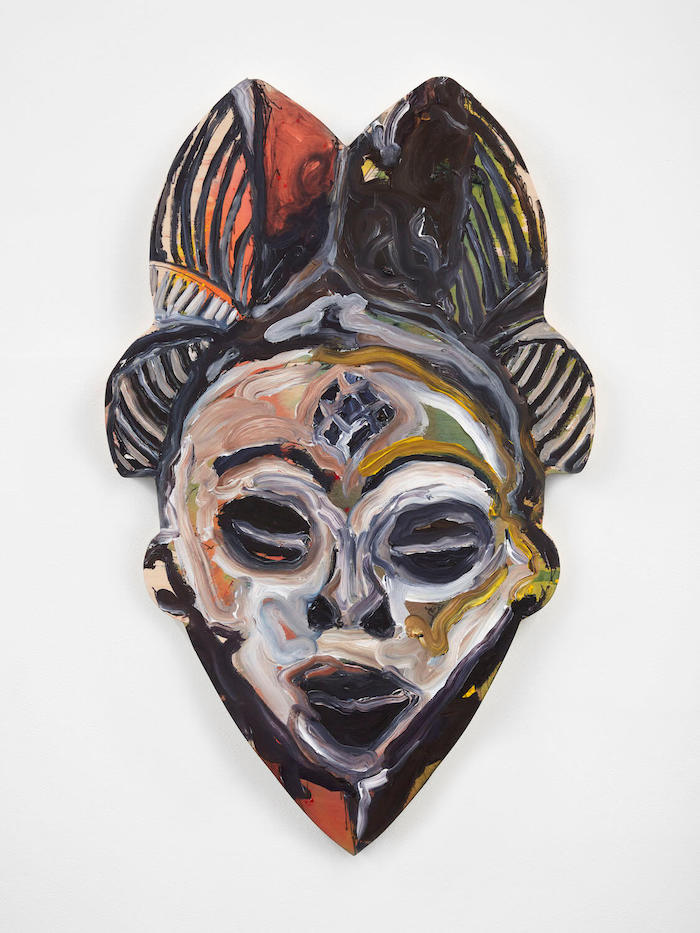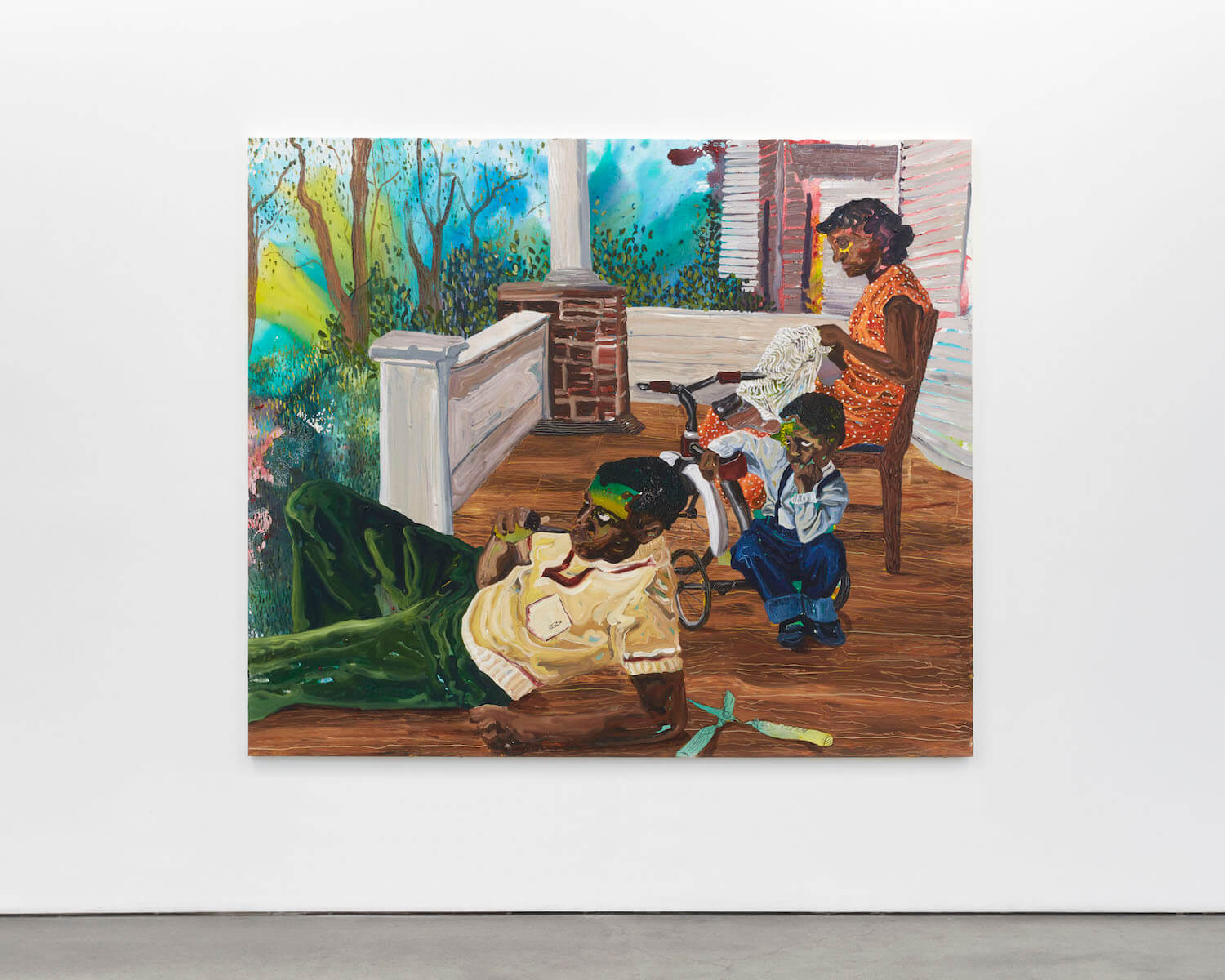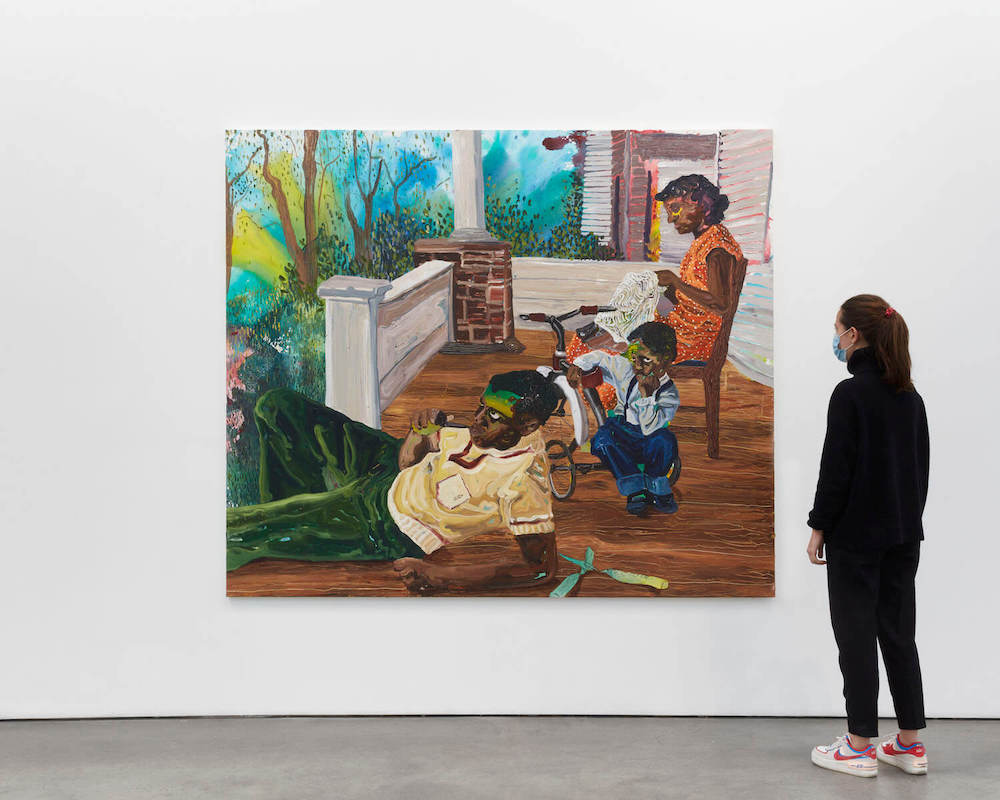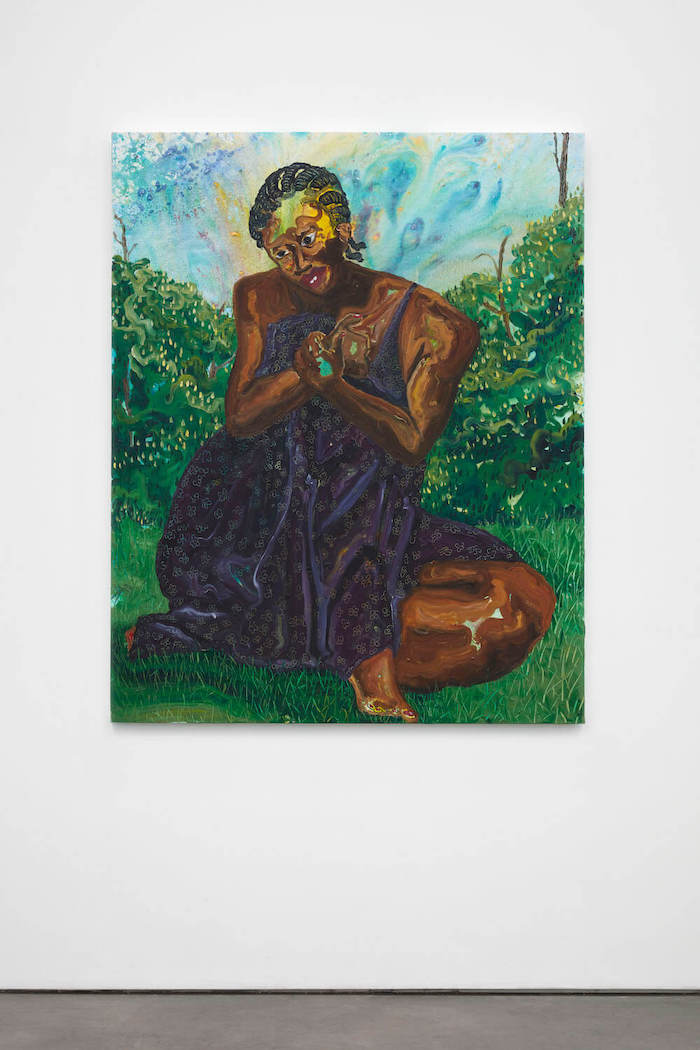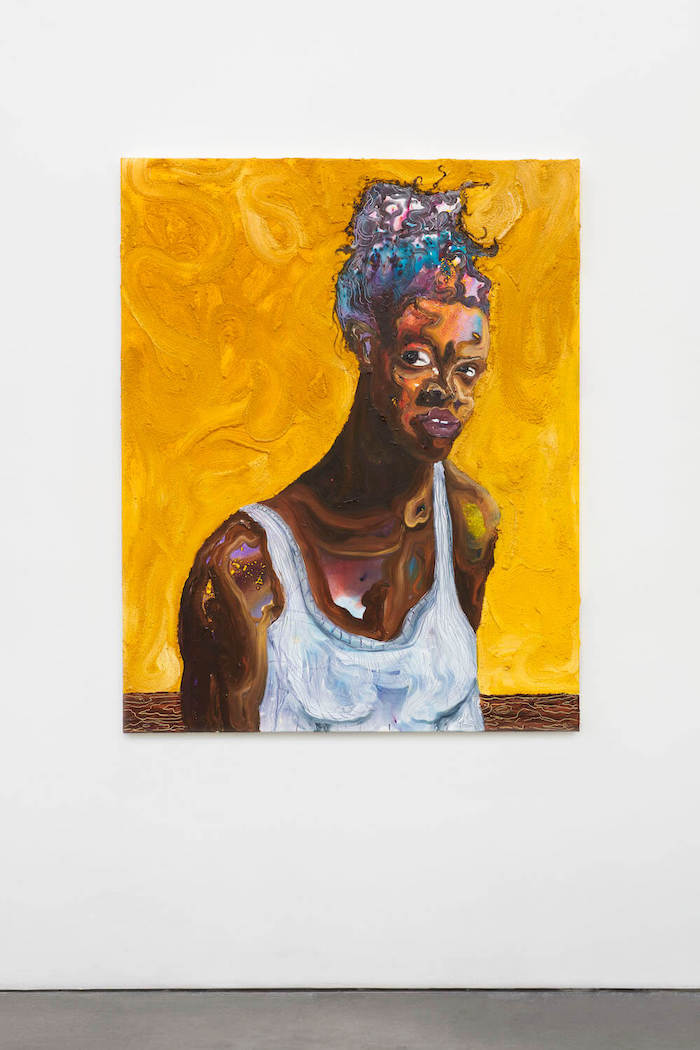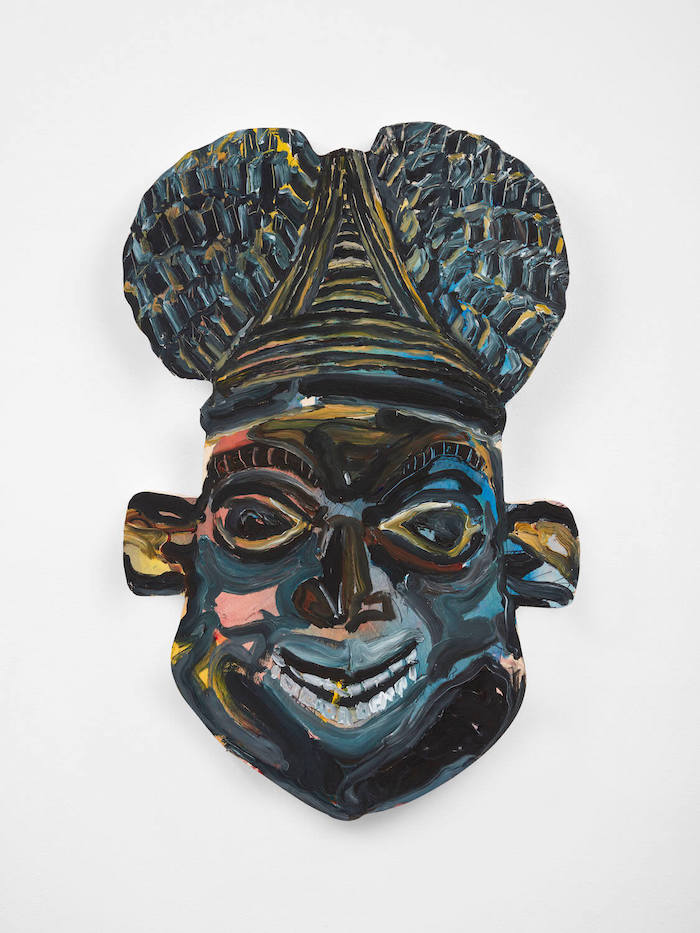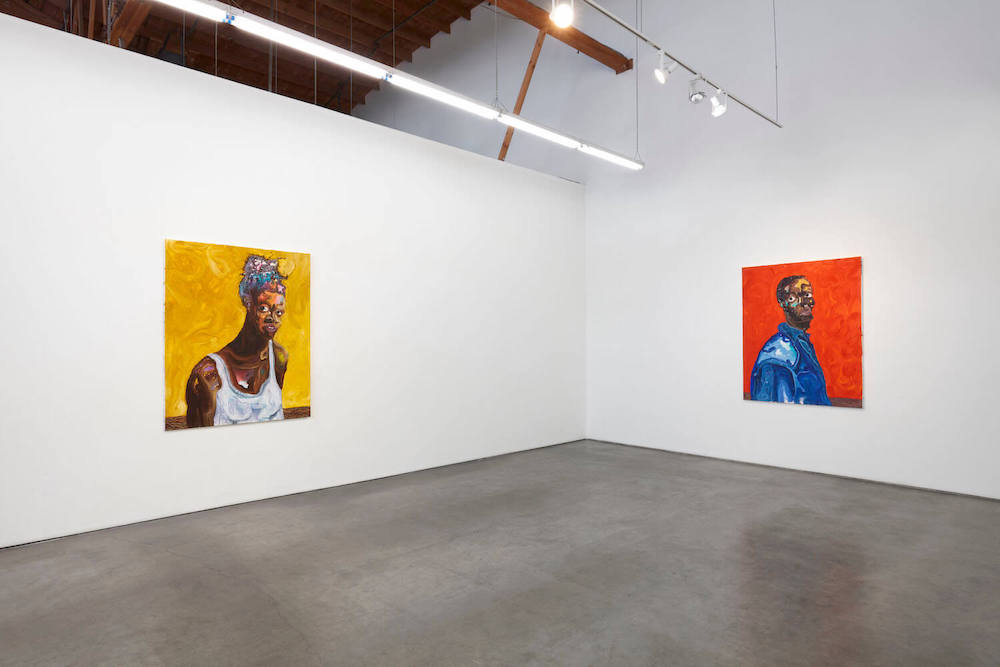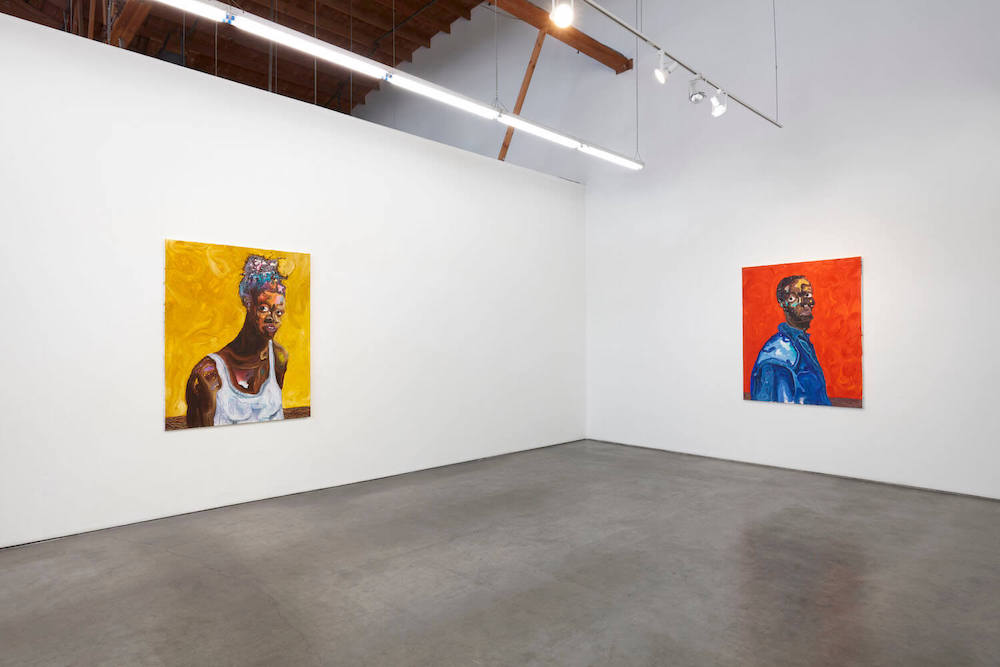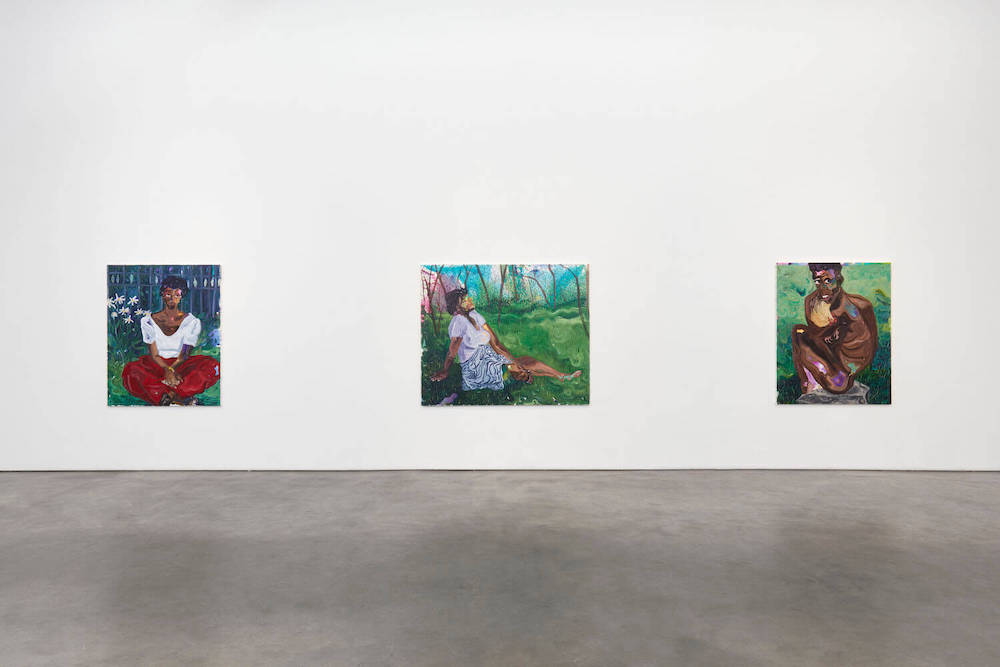François Ghebaly is pleased to present Ludovic Nkoth’s Don’t Take This Too, the Cameroonian-born, New York-based painter’s first major solo exhibition. Don’t Take This Too introduces viewers to Nkoth’s distinctively swirling brush, his layered, vivid palette, and his iconography of figures drawn from both fantasy and memory. Each canvas starts with a wash of pigment that flows in swaths of vivid color, over which Nkoth defines the subject’s posture and features, allowing the initial sprawl to shine through as an inner iridescence. Constructed of fluid, twisting contours, Nkoth’s figures often look captured in the process of formation, reached for as one reaches for a half-collapsed memory or a dream upon waking.
At the heart of the exhibition, two family portraits depict aspects of Nkoth’s personal biography through a filter of fiction. One is a diptych of two conjoined canvases, showing a family of six, at ease together around a living room. The other is a singular canvas—a mother, a father, and a son on the porch of a house. Nkoth’s own family is separated by an ocean, and his personal history tracks his migration at age thirteen from his mother in Yaoundé, Cameroon to his father in South Carolina. This displacement is a pivotal event in understanding Nkoth’s exploration of Black identity—both African and African American with a cultural mixedness that speaks to the joint status of insider and outsider. These depictions of family life show an idealized unity, yet Nkoth embeds the potential of dissolution into each—the diptych’s seam of two canvases meeting; a pair of garden shears lying threateningly in the foreground.
Elsewhere, in the exhibition’s title painting, a nude male figure sits on a stone, clutching a chicken tight to his chest. For Nkoth, the chicken stands as an emblem of cultural memory and continuity—chicken as sustenance, but also as a part of ritual and reciprocity, recalling the family voodoo ceremonies of his youth. Grasping this rooster under the imperative Don’t Take This Too, the piece is a mournful, protective cry against all that has been taken from Cameroon, all that has been forgotten. Like other key Nkoth paintings, the work also posits a deeper sense of hope and possibility emanating from cultural memory. To understand where we go from here, we have to understand how we arrived.



